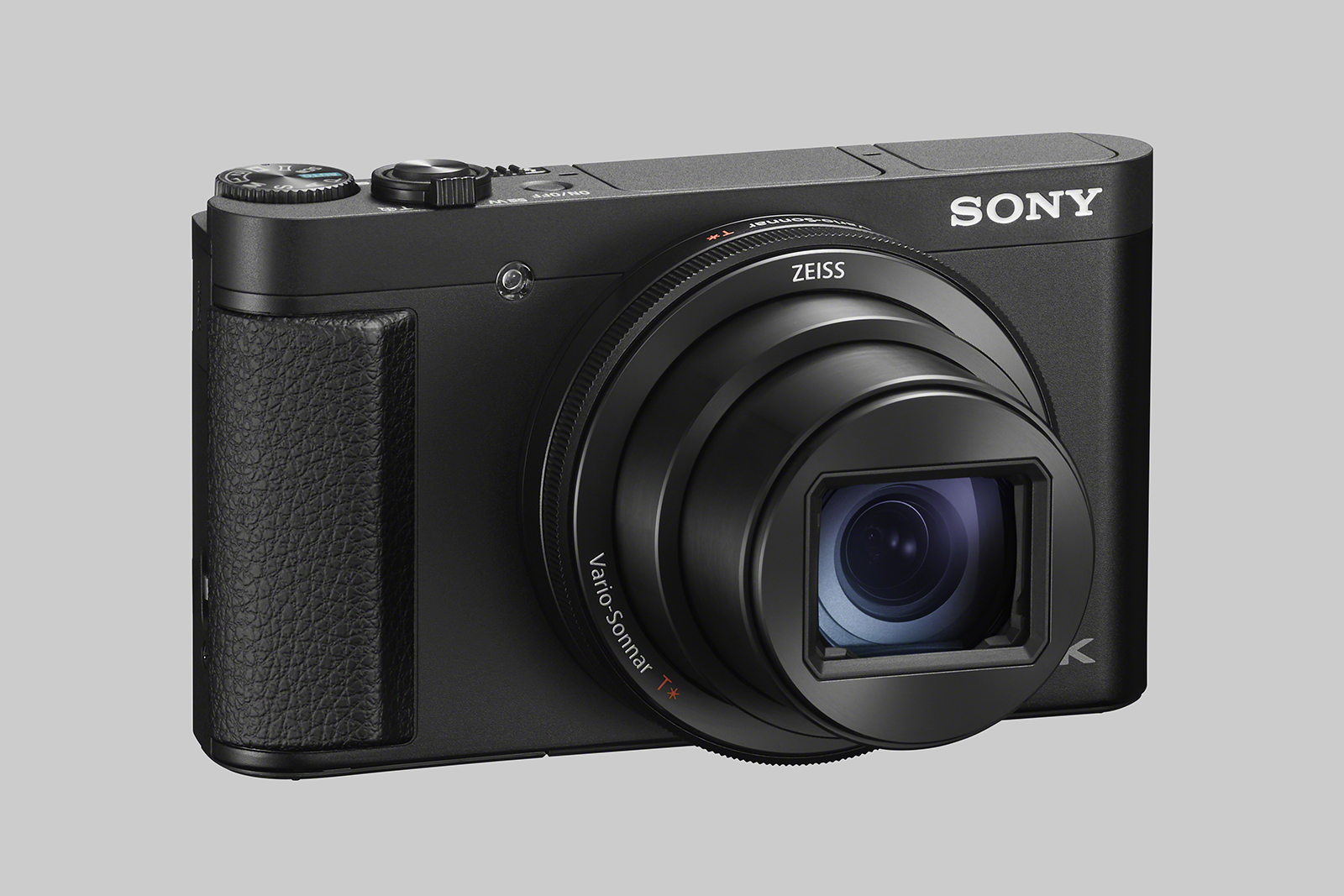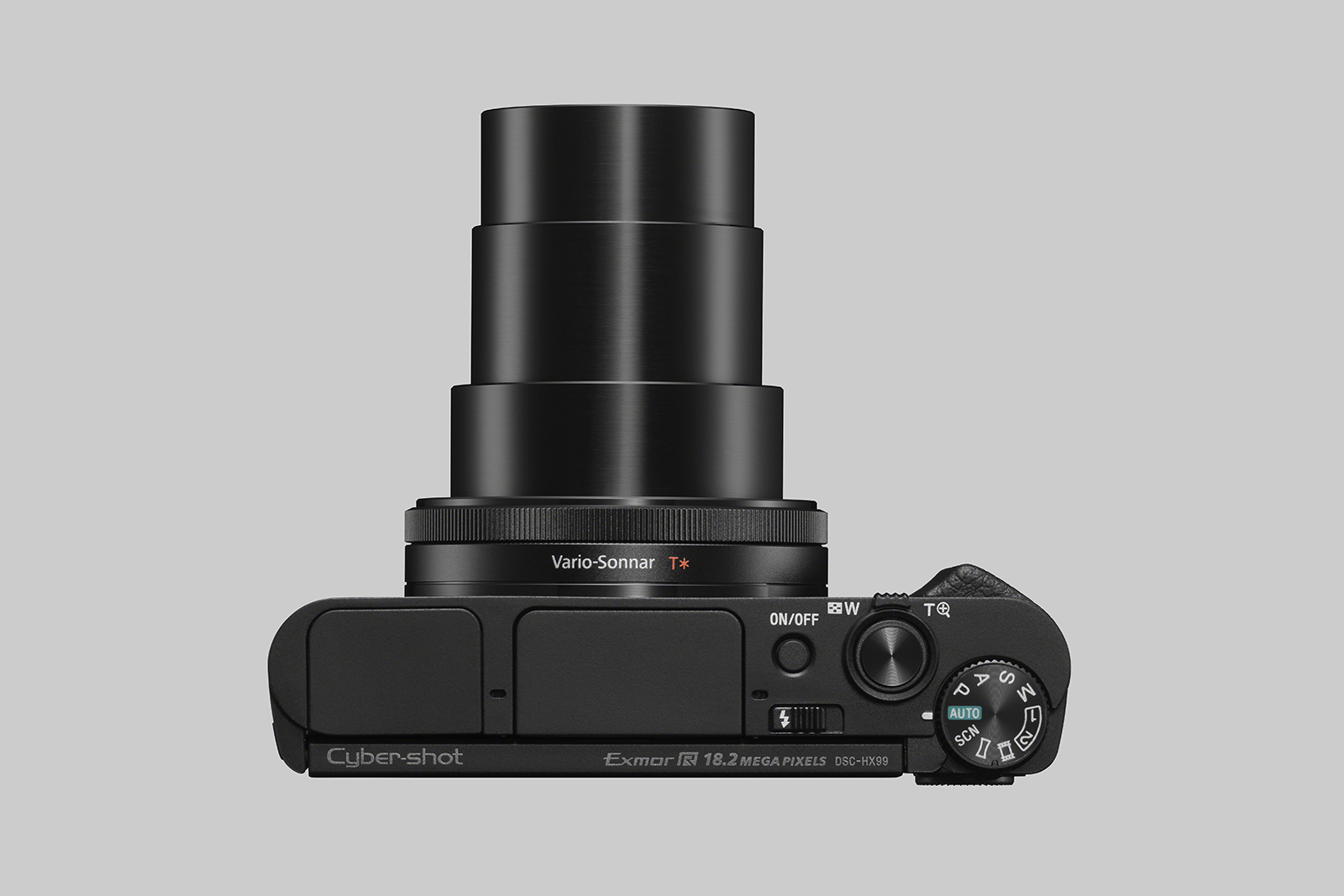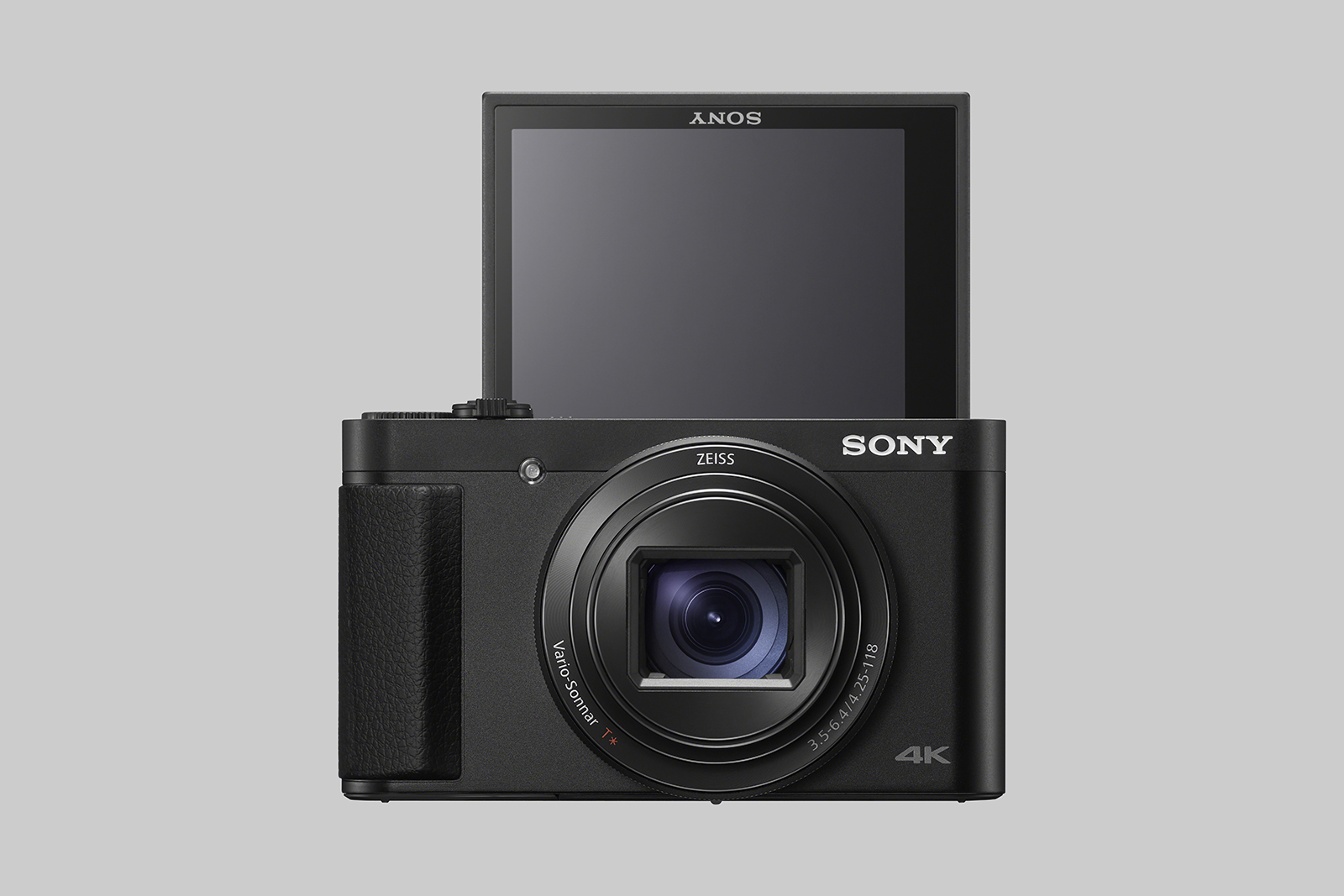Sony’s HX90-series zooms mix tiny bodies with big zoom lenses — and now, more power. On Monday, October 15, Sony introduced the Sony Cyber-Shot HX99, a compact zoom with an updated processor that enables both 4K and longer burst shoots. The $450 camera is heading to the United States and Canada after a summer 2018 launch in Europe.
The $450 Sony HX99 mixes an 18.2-megapixel, 1/2.3-inch sensor with a 28x optical zoom lens, equivalent to about a 24-730mm zoom. Like the earlier Sony HX90V, Sony claims the camera has one of the smallest bodies in the travel zoom category, measuring less than an inch and a half deep and less than 3 inches tall. The camera sits at a lightweight 7.7 ounces (body only).
But while the sensor and size are reminiscent of the earlier HX90, speed and video set the new HX99 apart. The camera uses an upgraded BIONZ X processor, which bumps the video quality up to 4K at 30 fps. The 4K is captured with full pixel readout and no pixel binning, Sony says. Slow motion 1080p video can be captured at 120 fps.
The updated processor also sports some new photo features too — the 10 fps burst speed is no longer limited to 10 shots, and can shoot up to 155 fine JPEGs in a row at that maximum burst speed. The Sony HX99 also mixes in optical image stabilization for sharper shots with that long zoom lens. The eye AF that automatically looks for the subject’s eyes that’s popular on Sony’s full-frame mirrorless cameras is also included on the HX99’s contrast detection autofocus system.
While the camera’s $450 price and 1/2.3-inch sensor are more consumer-oriented, the HX99 still fits in RAW photos for more editing control, as well as manual exposure modes and manual focus.
The Sony HX99’s compact body still manages to fit in a control ring around the lens. A flip-up, 180-degree tilting touchscreen sits at the back of the camera, while an electronic viewfinder also pops up from the top of the camera. The HX99 also uses a touchpad for adjusting the focus while using the viewfinder. Bluetooth is built in, and can also be used to geotag photos.
The Sony HX99 will be available beginning in early November, with a retail price of about $450.
Editors' Recommendations
- Sony claims mini-LED superiority with 2022 8K and 4K TVs
- The Find X3 Pro has a 60x zoom ‘microscope’ camera, and it’s so much fun
- Optoma’s CinemaX P2 short throw 4K projector has a built-in soundbar
- Sony’s A7S III is the ultimate 4K video camera, five years in the making
- Sony A6100 vs. Fujfilm X-T200: Best beginner mirrorless cameras compared







